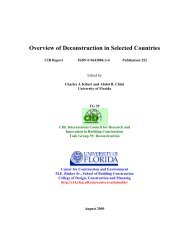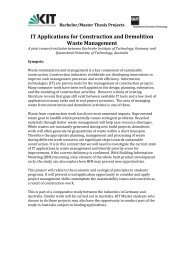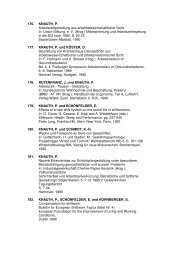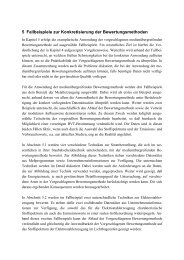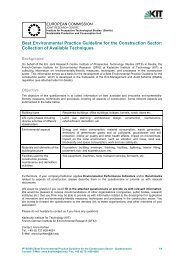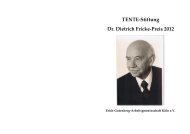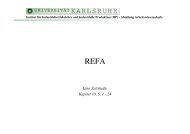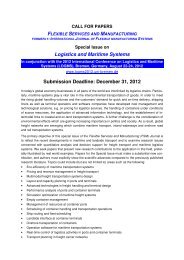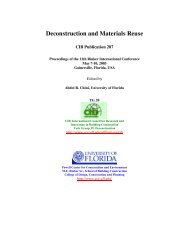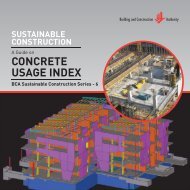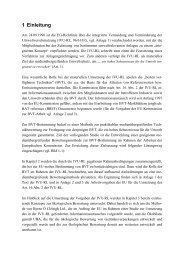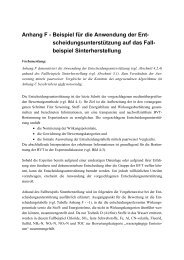Waste reduction final report -4 - Test Input
Waste reduction final report -4 - Test Input
Waste reduction final report -4 - Test Input
You also want an ePaper? Increase the reach of your titles
YUMPU automatically turns print PDFs into web optimized ePapers that Google loves.
3. Policies, strategies and legislation<br />
Sustainable Construction Master Plan<br />
The Building and Construction Authority (BCA), together with industry associations and<br />
major government agencies, formulated the Sustainable Construction Master Plans in 2008 to<br />
reduce the use of natural materials in building projects. Five strategic thrusts shown in Table<br />
1 have been identified to drive the industry towards sustainable construction. Besides<br />
reducing the impact of construction activities on the environment through a closed-loop zerowaste<br />
construction approach, the Sustainable Construction Master Plan also mitigates impact<br />
on limited landfill capacity with a view of working towards zero landfill.<br />
In Singapore’s context, Sustainable Construction focuses on the adoption of materials and<br />
products in buildings and construction that will consume less natural resources and increase<br />
the reusability of such materials and products for the same or similar purpose. Two key focus<br />
areas of sustainable construction in Singapore are efficient design to optimise use of natural<br />
materials, and waste minimization, reuse and recycling.<br />
Table 1: Five Strategic Thrusts of Sustainable Construction Master Plan<br />
Efficient Design to Optimise<br />
Use of Natural Materials<br />
Recycling and Use of<br />
Sustainable Materials<br />
Strategic Thrust 1 Government taking the lead in adopting sustainable construction<br />
Strategic Thrust 2 Promoting sustainable construction in private sector<br />
Strategic Thrust 3 Building industry capabilities<br />
Strategic Thrust 4<br />
Strategic profiling and raising awareness to generate sustained<br />
demand<br />
Strategic Thrust 5 Setting minimum standards through legislative requirements<br />
STRATEGIC THRUST 1: Government taking the lead in adopting sustainable<br />
construction<br />
The Government will continue to lead the way forward in environmental sustainability<br />
through adoption of green procurement practices for public sector developments. In general,<br />
the public sector projects accounts for about 30-40% of the total construction demand in<br />
Singapore. All new public sector buildings and those undergoing major retrofitting works are<br />
required to achieve the highest Green Mark accolade, i.e. the Green Mark Platinum Award.<br />
Besides new buildings, Government is also committed to have all existing buildings owned<br />
by government agencies to attain the Green Mark Gold Plus standard by 2020.<br />
It is also important for government agencies to take the lead in championing sustainable<br />
construction practices in their projects and showcase these efforts to the industry. For<br />
example, the major public housing developer, the Housing & Development Board (HDB),<br />
specifies the use of recycled aggregates for non-structural concrete elements in their projects.<br />
The Land Transport Authority (LTA) has also piloted a trial test on the use of Incineration<br />
Bottom Ash (IBA) as alternative materials in road construction (Figure 5).<br />
57



